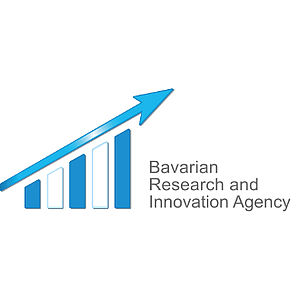
EIC Transition
24.01.2025
The EIC Transition aims to further develop promising results from EIC Pathfinder projects and the European Research Council (ERC) Proof of Concept (PoC) funding line. The EIC Transition programme supports the further development and application of promising results from EIC Pathfinder and European Research Council (ERC) Proof of Concept projects. The aim of the programme is to transfer novel technologies that are at an early stage of development into real-world environments, thereby increasing their market readiness. EIC Transition funds projects that aim to further develop and validate technologies at Technology Readiness Levels (TRL) 4 to 6. This includes technology validation testing and prototyping, as well as the development of a business model and plan to drive commercialisation.
EIC Transition enables the transfer of technologies from the laboratory to real-world application environments through prototyping, formulation, modelling, user testing and other validation methods. The aim is to develop a robust business case and build a viable business model that supports the sustainable commercialisation of the technology and strengthens Europe as a location for innovation in the long term.
In 2025, the EIC Transition programme will only include open calls for proposals (Transition Open) without specific challenges.
Programme Objective
EIC Transition projects should
- Demonstrate the reliability of the technology for the intended application and
- Develop a validated business model and business plan for market introduction.
It is also expected that the intellectual property (IP) developed in the project will be adequately protected.
Conditions of participation
- Eligible applicants:
- Individual applicants (start-ups, SMEs, spin-offs, universities and research organisations),
- Small consortia of two to five partners from EU Member States or Associated Countries.
- Organisations that have already successfully completed projects under the EIC Pathfinder, the ERC Proof of Concept Grants or the Future and Emerging Technologies (FET) and now wish to further develop their research results are eligible to participate.
Funding and budget in the EIC Transition
Eligible activities
- The programme supports the validation of technologies in real-world settings and the development of a sound business model and plan. Projects should have clearly defined technical and commercial objectives and measurable milestones. Typical validation activities include prototyping, user and application testing, and iterative market feedback.
Funding and Budget
- Funding rate: 100% of eligible costs
- Project duration: 1 to 3 years
- Amount of funding: Up to €2.5 million per project. Applications for higher amounts may be considered in exceptional cases.
- Total budget: A total of €98 million is available for 2025.
- Booster Grants: An additional €50,000 for activities supporting commercialisation and complementary activities (portfolio activities).
Further support
EIC Transition projects have access to a wide range of Business Acceleration Services (BAS), including
- Participation in tailored matchmaking events,
- support from the EIC Tech2Market BAS to develop market readiness, and
- EIC programmes such as the Women Leadership Programme to develop entrepreneurial skills.
Application procedure in the EIC Transition
Application procedure
The application procedure consists of two steps and is carried out via the European Funding & Tenders Opportunities Portal.
1. Scope of the application
Maximum 20 A4 pages for the full application.
2. Stage 1: Written evaluation
Evaluation by three EIC experts: Applications will be evaluated according to the following criteria:
- Excellence - Weighting: 60%
- Impact - weighting: 20%.
- Quality and efficiency of implementation - weighting: 20%.
The evaluation will be based on the average score of the three application parts.
3. Stage 2: Interview
Invitation to interview: The best applicants will be invited to an interview with an expert jury in Brussels.
Jury: The jury, composed of a maximum of six EIC experts, evaluate the applications at this stage with a clear 'Go' or 'No Go' vote.
4. Preference for women-led projects
Women-led SMEs or consortia will be given preference in the selection process.
5. Seal of excellence
Applicants who pass the first stage but are not selected in the second stage may, under certain conditions, receieve an EIC Seal of Excellence.
Timetable
The timetable foresees approximately 17 weeks from the deadline to the grant agreement:
Deadline
There is a deadline for submission in 2025: 17 September 2025 (at 5 pm).
More about the EIC Transition on the web
Official website of the EU Commission
Website of the European Liaison Office of the German Research Organisations (KoWi)
European Funding & Tenders Opportunities Portal
Do you have an idea for an EIC Transition project? Contact the SME advisory services of BayFOR now:

Natalia García Mozo
Head of Unit SME Advisory Services
Phone: +49 89 9901888-171
Email: mozo@no-spam-pleasebayfor.org




![[Translate to Englisch:] Der Zeitplan des Förderprogramms Transition](/fileadmin/user_upload/BayFOR-bilder/eu-foerderzentrum/BayFOR-transition-zeitplan.jpg)
